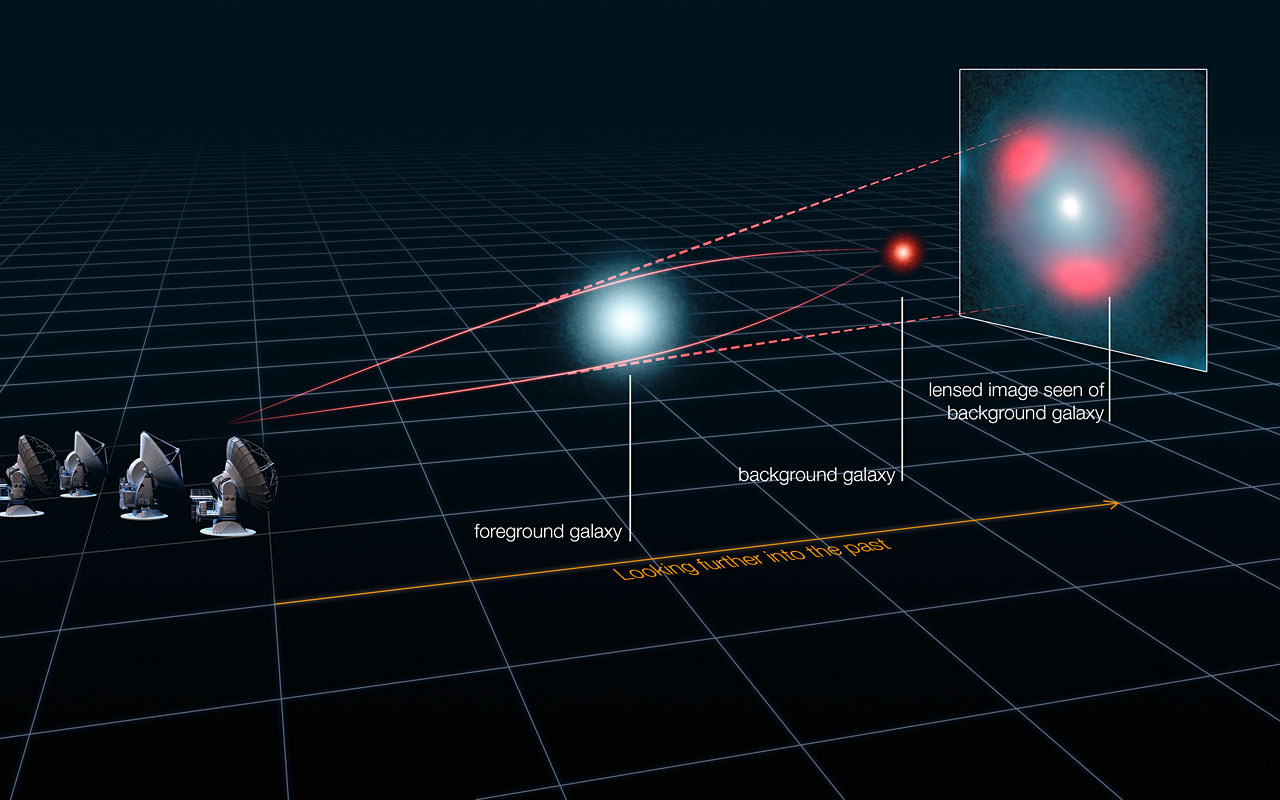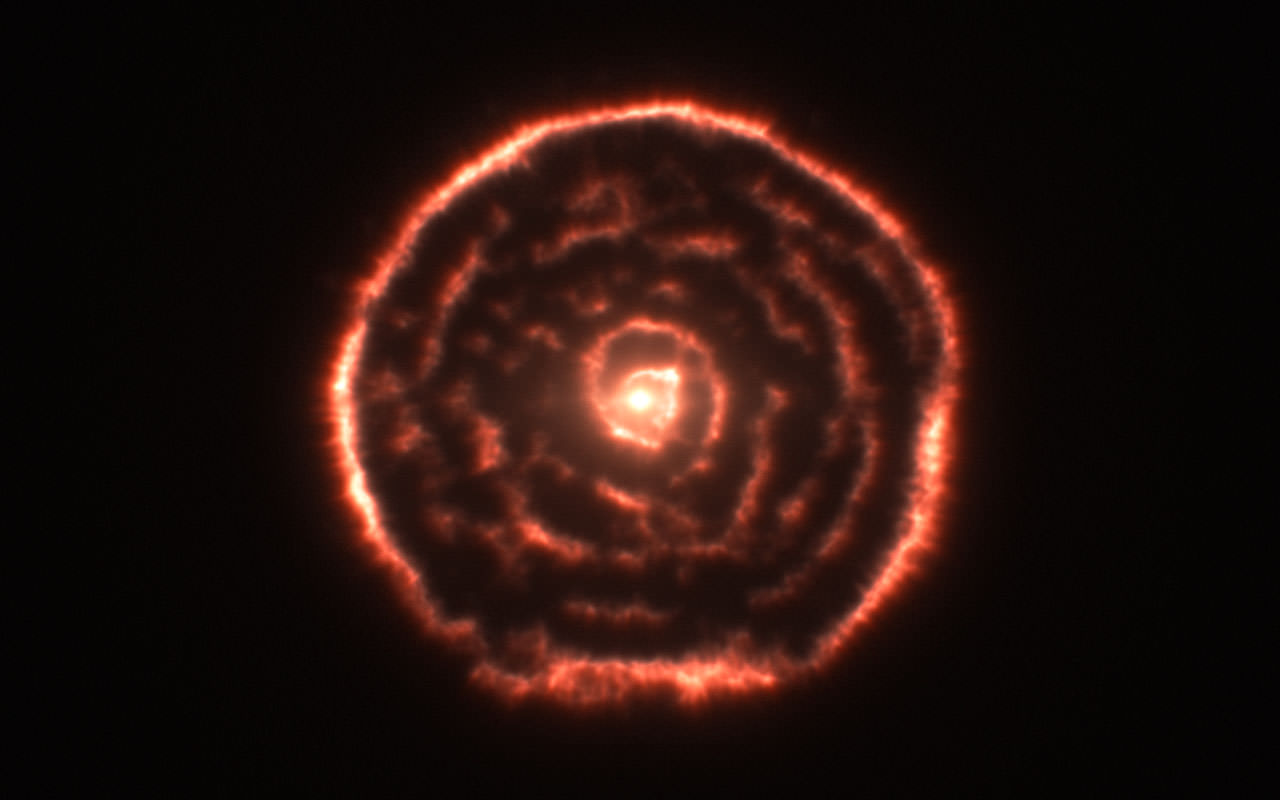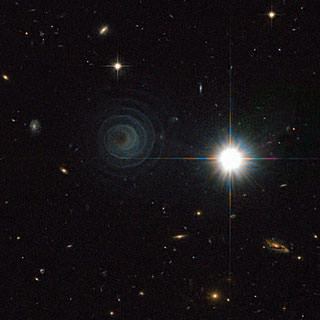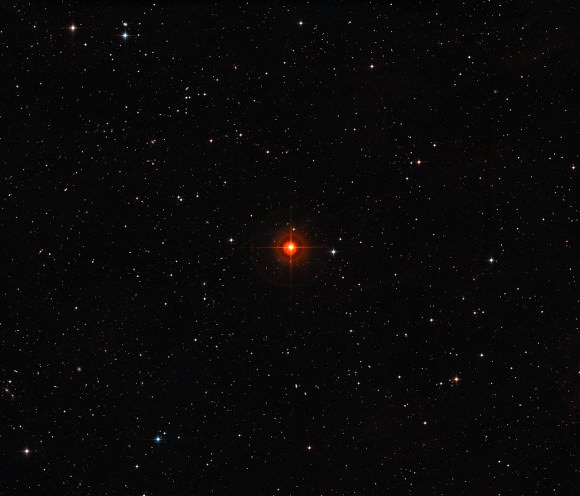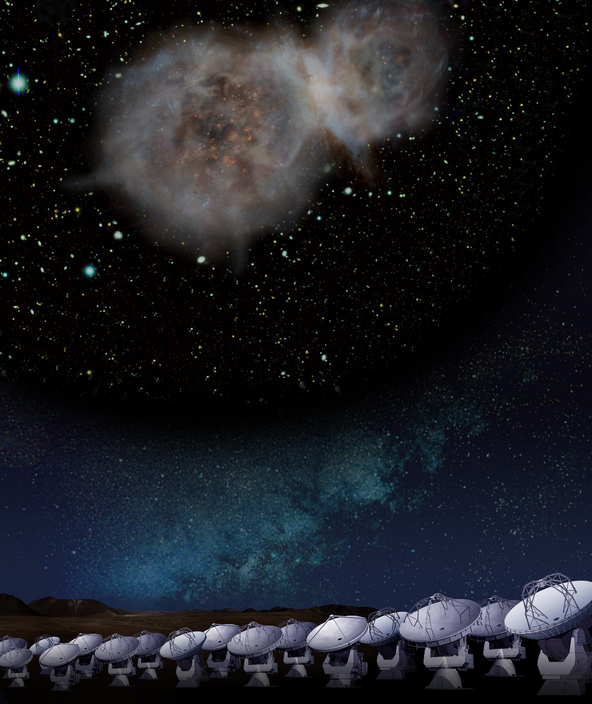Let’s turn down the lights and set the stage… We’re moving off through space, looking not only at distant galaxies, but the incredibly distant past. Once upon a time astronomers assumed that star formation began in massive, bright galaxies as a concentrated surge. Now, new observations taken with the Atacama Large Millimeter/submillimeter Array (ALMA) are showing us that these deluges of stellar creation may have begun much earlier than they thought.
According to the latest research published in today’s edition of the journal, Nature, and in the Astrophysical Journal, researchers have revealed fascinating discoveries taken with the new international ALMA observatory – which celebrates its inauguration today. Among its many achievements, ALMA has given us a look even deeper into space – showing us ancient galaxies which may be billions of light years distant. The observations of these starburst galaxies show us that stars were created in a frenzy out of huge deposits of cosmic gas and dust.
“The more distant the galaxy, the further back in time one is looking, so by measuring their distances we can piece together a timeline of how vigorously the Universe was making new stars at different stages of its 13.7 billion year history,” said Joaquin Vieira (California Institute of Technology, USA), who led the team and is lead author of the paper in the journal Nature.
Just how did these observations come about? Before ALMA, an international team of researchers employed the US National Science Foundation’s 10-metre South Pole Telescope (SPT ) to locate these distant denizens and then homed in on them to take a closer look at the “stellar baby boom” during the Universe’s beginning epoch. What they found surprised them. Apparently star forming galaxies are even more distant than previously suspected… their onslaught of stellar creation beginning some 12 billion years ago. This time frame places the Universe at just under 2 billion years old and the star formation explosion occurring some billion years sooner than astronomers assumed. The ALMA observations included two galaxies – the “most distant of their kind ever seen” – that contained an additional revelation. Not only did their distance break astronomical records, but water molecules have been detected within them.
However, two galaxies aren’t the only score for ALMA. The research team took on 26 galaxies at wavelengths of around three millimetres. The extreme sensitivity of this cutting edge technology utilizes the measurement of light wavelengths – wavelengths produced by the galaxy’s gas molecules and stretched by the expansion of the Universe. By carefully measuring the “stretch”, astronomers are able to gauge the amount of time the light has taken to reach us and refine its point in time.
“ALMA’s sensitivity and wide wavelength range mean we could make our measurements in just a few minutes per galaxy – about one hundred times faster than before,” said Axel Weiss (Max-Planck-Institut für Radioastronomie in Bonn, Germany), who led the work to measure the distances to the galaxies. “Previously, a measurement like this would have been a laborious process of combining data from both visible-light and radio telescopes.”
For the most part, ALMA’s observations would be sufficient to determine the distance, but the team also included ALMA’s data with the Atacama Pathfinder Experiment (APEX) and ESO’s Very Large Telescope for a select few galaxies. At the present time, astronomers are only employing a small segment of ALMA’s capabilities – just 16 of the 66 massive antennae – and focusing on brighter galaxies. When ALMA is fully functional, it will be able to zero in on even fainter targets. However, the researchers weren’t about to miss any opportunities and utilized gravitational lensing to aid in their findings.

“These beautiful pictures from ALMA show the background galaxies warped into multiple arcs of light known as Einstein rings, which encircle the foreground galaxies,” said Yashar Hezaveh (McGill University, Montreal, Canada), who led the study of the gravitational lensing. “We are using the massive amounts of dark matter surrounding galaxies half-way across the Universe as cosmic telescopes to make even more distant galaxies appear bigger and brighter.”
Just how bright is bright? According to the news release, the analysis of the distortion has shown that a portion of these far-flung, star-forming galaxies could be as bright as 40 trillion Suns… then magnified up to 22 times more through the aid of gravitational lensing.
“Only a few gravitationally lensed galaxies have been found before at these submillimetre wavelengths, but now SPT and ALMA have uncovered dozens of them.” said Carlos De Breuck (ESO), a member of the team. “This kind of science was previously done mostly at visible-light wavelengths with the Hubble Space Telescope, but our results show that ALMA is a very powerful new player in the field.”
“This is an great example of astronomers from around the world collaborating to make an amazing discovery with a state-of-the-art facility,” said team member Daniel Marrone (University of Arizona, USA). “This is just the beginning for ALMA and for the study of these starburst galaxies. Our next step is to study these objects in greater detail and figure out exactly how and why they are forming stars at such prodigious rates.”
Bring the house lights back up, please. As ALMA peers ever further into the past, maybe one day we’ll catch our own selves… looking back.

